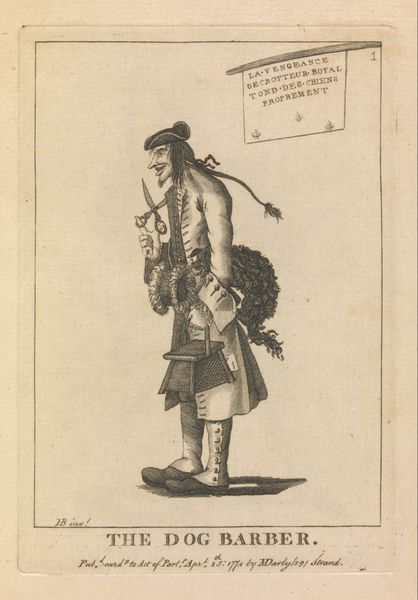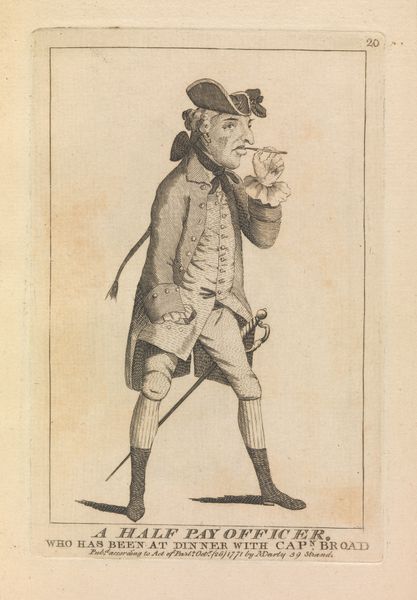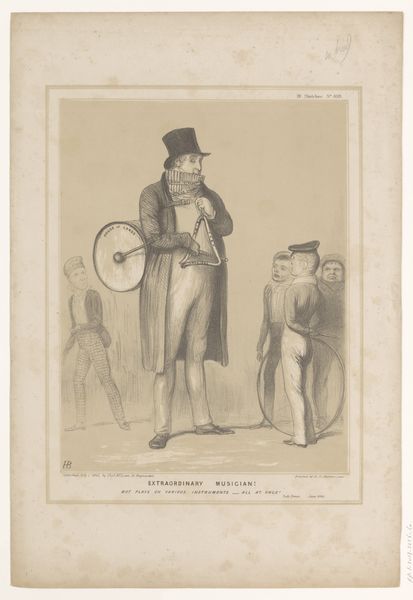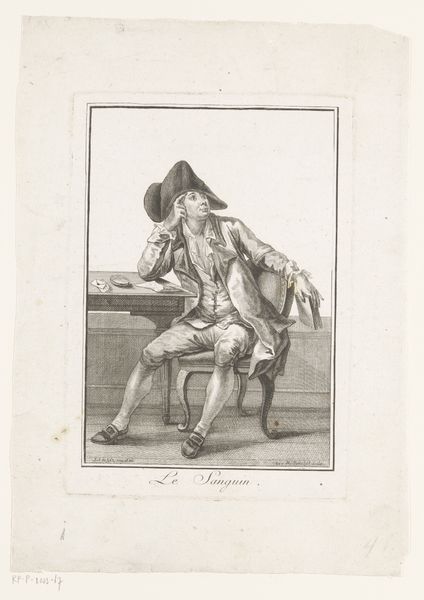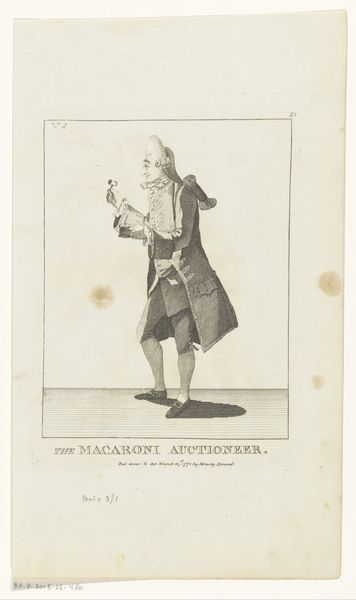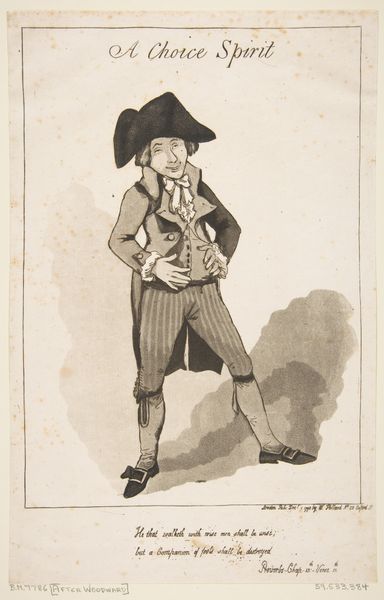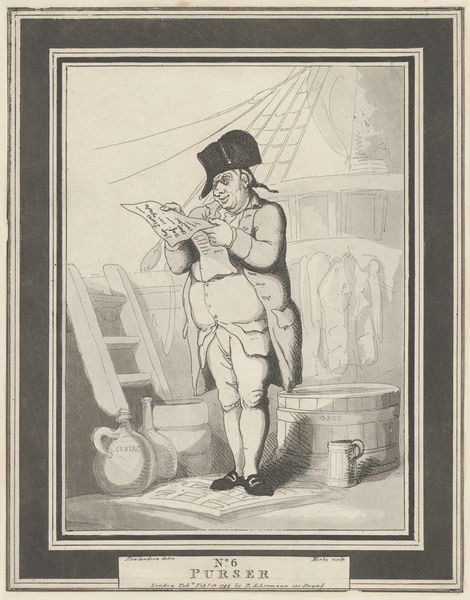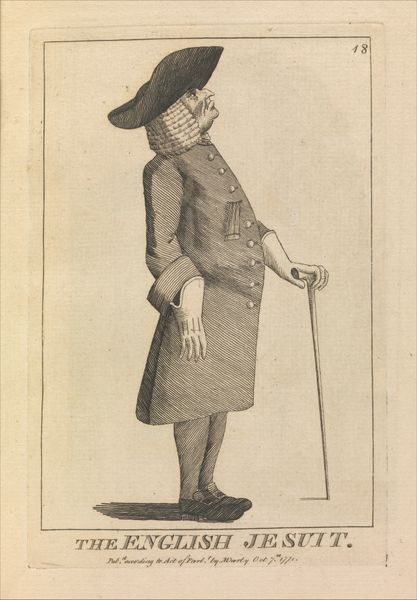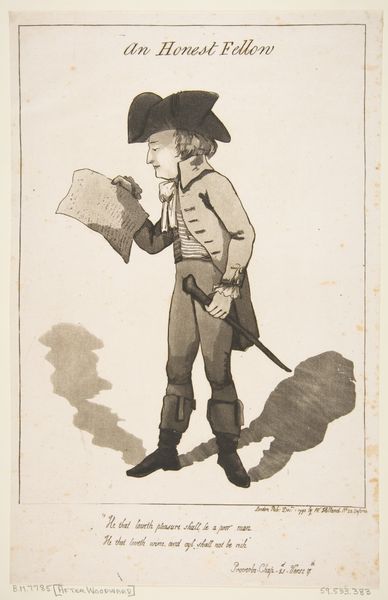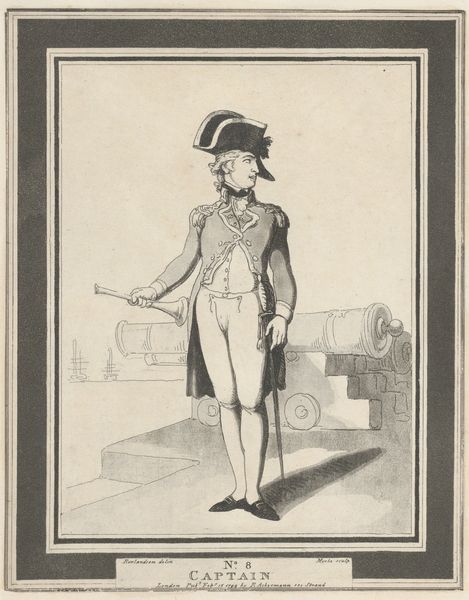
lithograph, print, etching
#
lithograph
# print
#
etching
#
caricature
#
genre-painting
Dimensions: height 175 mm, width 126 mm
Copyright: Rijks Museum: Open Domain
Editor: This lithograph, etching, and print from 1772 is called "Macaroni op een stoel met twee prenten in zijn hand," and it is by an anonymous artist. It has such a satirical, slightly absurd feel to it. What strikes you about this piece? Curator: I see an etching deeply rooted in its socio-economic context. Look at the title, "The Fuminigating Macaroni." This refers to "macaronis", the young men of the 1770s who adopted Continental affectations, luxurious clothing, and a distinctly foppish style. Editor: Foppish, meaning? Curator: Overly concerned with their appearance, adopting foreign trends. What's striking is the artist's choice to portray this figure holding prints - consumer objects that visually displayed social and aesthetic aspirations, themselves products of the booming print market of the 18th century. What’s discarded on the floor around him? Editor: They almost look like discarded building blocks or carved stonework. The waste of creative production maybe? Curator: Precisely! This wasn't a society just consuming pretty things, they consumed ideas about things: aspirational images like these prints, carefully crafted identities, all playing with materiality in ways that defined the period. What this artist does, it draws our attention to the performance of this man's social role, almost like acting in a theater. Editor: So, it is all about consuming items to define status, and he is literally surrounded by examples. Thanks, it gives you a new appreciation to see it in a societal framework. Curator: Exactly! The “Macaroni” isn’t just a visual spectacle, it’s a commentary on the growing obsession with consumerism and image that consumed the era.
Comments
No comments
Be the first to comment and join the conversation on the ultimate creative platform.
